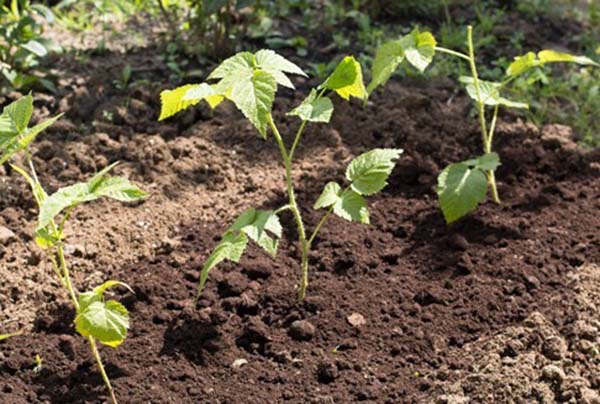Transplanting raspberries to a new place in autumn and spring
Probably the moment has come when you need to plant or transplant raspberries in a new place, right? It's not for nothing that you got to this material.
Well, then you will learn about when and how to properly plant and transplant raspberries, what you need to take into account so that the transplant is successful and the berry bush begins to actively take root.
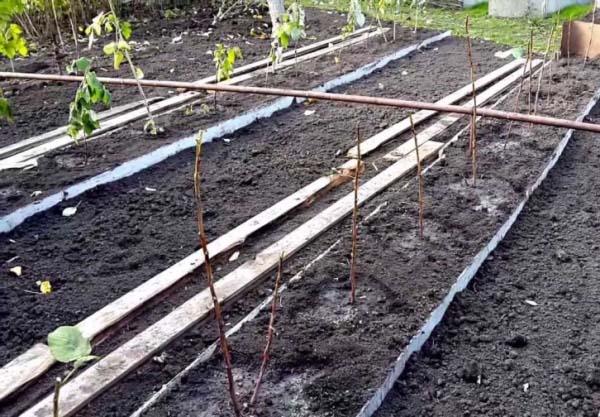
Content
Why and why you need to transplant raspberries
Of course, most gardeners neglect this procedure. Most likely because they don't know why it needs to be done. And in vain.
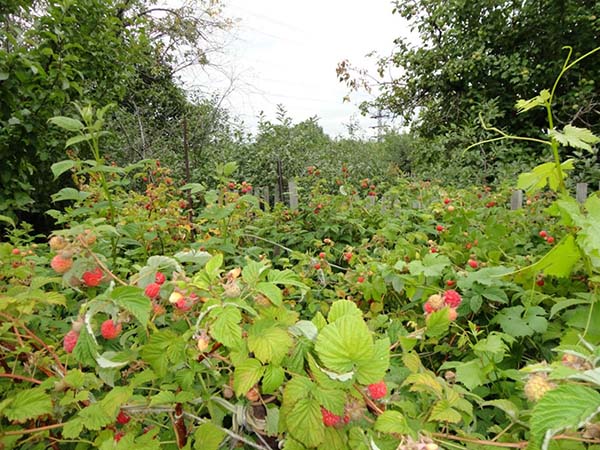
Reasons for the need for a raspberry transplant:
- The berry bush depletes the soil over time.And this means that he begins to receive less nutrition for good fruiting, respectively, the harvests become smaller in volume (quantity) and worse in taste (quality).
- Dense plantings can cause the rapid spread of various diseases.
- The transplant stimulates the appearance of new shoots, which means that the bush is renewed (refreshed).
- Neatly planted shrubs keep your garden as tidy as possible.
Advice! It is recommended to transplant raspberries to a new place every 4-5 years. But if the fruiting and quality of the berries does not deteriorate, then the procedure can be postponed for a couple of years.
When is it better to transplant raspberries: in spring or autumn
It is optimal to transplant raspberries to a new place either before bud break (also allowed at the time of their growth) - in the spring, or a month before the start of frost, that is, in the fall.
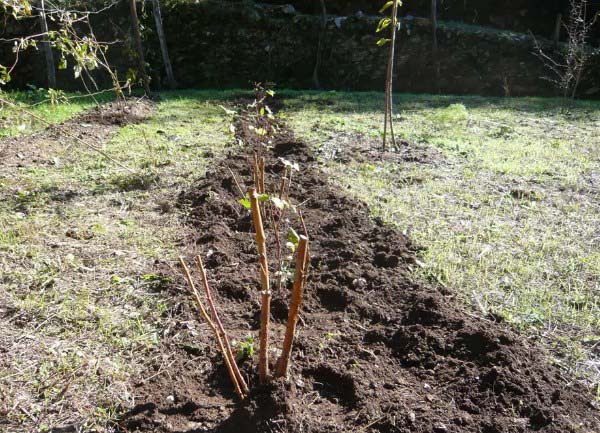
As for the specific timing of the raspberry transplant, depending on the characteristics of the climatic zone of your residence, the time is shifted on average by a month. So, in the south, in the spring - this is the end of March-April, in the fall - October-November, in the middle zone (Moscow region) - April-May, or September, in the Urals and Siberia - May, or late August-early September.
However, there is no consensus among gardeners when it is better to transplant raspberries - in autumn or spring. Therefore, the transplant, as a rule, is performed as needed and when there is free time.
How to choose and prepare a place, and the raspberry bush itself for transplanting
In order for the transplanted raspberry bush to grow and develop normally, it is necessary to choose the right place for it on the site and the most suitable soil.
Place on the site
When choosing a place for transplanting a raspberry bush, it is worth choosing a site that is illuminated for a sufficient time (but not too open, all the more so it cannot be overly shady) and protected from drafts and strong winds.
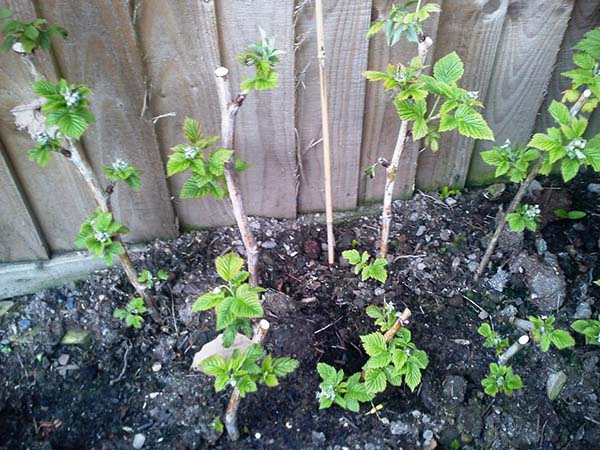
Often, raspberries are allocated on the site near the fence.
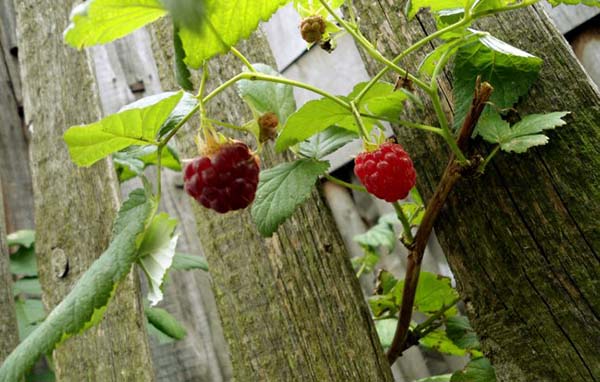
After which you can and can not plant: crop rotation rules
It is believed that it is best to transplant raspberries to a place where nothing has grown before, which, of course, is practically impossible in real conditions. And it is categorically impossible to plant in a place where raspberries also grew, from which you tried to get rid of.
The fact is that there is no way to separate the new raspberry from the old one, because the raspberry is able to germinate even from very small roots left in the soil after digging. Therefore, the raspberries need to be transplanted only to a new place.
In general, the best predecessors for planting raspberries are:
- siderates (mustard, rye, oats, alfalfa);
- legumes (peas, beans);
- cucumbers and zucchini;
- onion and garlic.
It is not recommended to transplant raspberries to the place where the following crops grew:
- strawberries (garden strawberries);
- potatoes.
Also, as a rule, raspberries are not planted next to currants and gooseberries.
Suitable soil
Raspberries are very demanding on the fertility of the soil, only then the bushes are able to give a bountiful harvest of delicious berries.
Ideally, the optimal soil for growing raspberries is loamy and sandy loam.
The acidity is neutral.
If you have acidic soil on your site, then it must be deoxidized using, for example, dolomite flour or a similar deoxidizer (for example, wood ash also perfectly deoxidizes the soil).
If you prepare the soil for transplanting raspberries in advance (it is better to cook in about 3-4 months), then fill the soil well with excellent compost or rotted manure (humus) at the rate of 6-8 kg per 1 square meter, it will also be reasonable to make superphosphate (30-40 grams per 1 square meter) and potassium sulfate (20-30 grams per 1 square meter), or wood ash (200 grams per 1 square meter). If the transplant is carried out in the spring, then it is good that the soil has and nitrogen fertilizer, eg, urea or ammonium nitrate... If transplanting occurs in the fall, then use more potassium-phosphorus fertilizers.
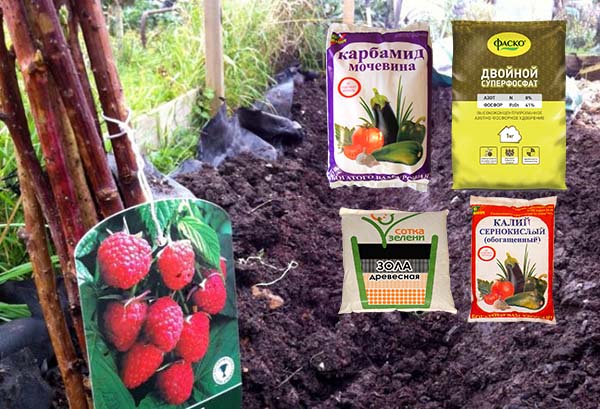
Alternatively, you can apply these fertilizers immediately before transplanting by sprinkling them on the bottom of the planting hole, but in a slightly smaller amount (about 2 times). In this case, the mixed fertilizers from above must also be sprinkled with a small layer (5 cm) of ordinary earth.
Important! If you are planting a seedling with an open root system (for example, if an earthen lump has crumbled during transfer or transportation), then it is recommended not to apply mineral fertilizers and fresh manure, which can harm (burn) the already recently damaged roots.
Planting holes and trenches: dimensions
You can transplant raspberry bushes either into individual planting holes (bush method) or into a common trench (tape method).
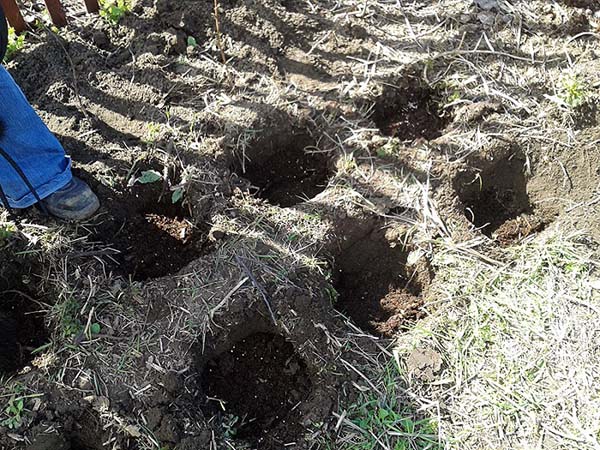
If you plan to plant the bushes in the holes, then it is optimal to dig them out in the following size - 30 cm (diameter) by 30 cm (depth), the distance between the holes is 50-70 cm, between the rows - 1.5-2 meters.
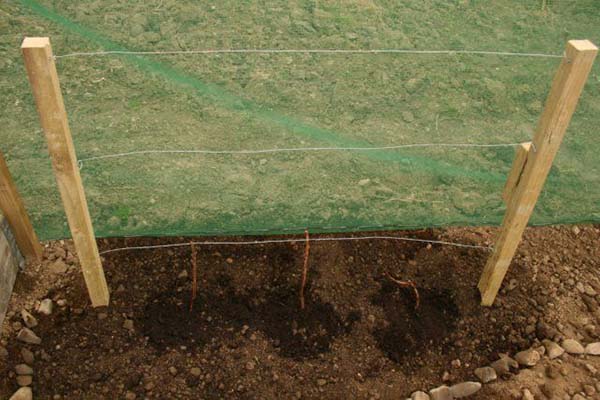
If in one trench, then again the depth is 30 cm, the width is 30-40 cm, the distance between the seedlings is the same (50-70 cm), the length is, according to your need, usually within 1.5-2 meters ( for 3-4 seedlings).

By the way! But the bottom of the planting pit or trench can be covered with trim boards, wood shavings, sawdust, branches, which are already beginning to overheat (and on top of compost and other fertilizers). After all, forest raspberries naturally grow on rotting stumps, among the windbreak.

Pruning before transplanting
It is worth considering that the root system of the root growth and the main bush is one, respectively, they have one source of food, which means that during the digging the roots will definitely be damaged. The plant, on the other hand, should spend all its energy on the development of the root system, and not on the growth of green mass (shoots) and even more so fruiting. Otherwise, it will begin to lag behind in development, and this will negatively affect its winter hardiness.
Thus, before digging up and replanting the raspberry bush, it must be cut sufficiently strongly, that is, to reduce the aboveground mass (shorten the shoots), leaving no more than 40-60 centimeters.
Note! You need to prune both in the autumn and in the spring transplant of raspberries.
Also, on young seedlings (root shoots or offspring), it is recommended to cut off all the leaves in the fall.
Video: seating (transplanting) raspberries to a new place
Methods for transplanting (breeding) raspberries
There are the following breeding methods for raspberries:
- dividing the bush (transplanting old raspberries);
- root shoots or offspring. In this case, you can multiply aslignified (in the fall) and green (in spring) offspring;
- root cuttings;
- green cuttings.

As a rule, when the procedure is carried out for transplanting or planting a raspberry bush, the first 2 methods (more precisely, 3) are used.
Advice! It is best to transplant raspberries in cloudy weather or in the evening. During the day, when there is heat and sun, it is strictly prohibited. By the way, this is why the procedure is not carried out in the summer.
Transplanting an old (adult) bush and dividing it
Naturally, only strong, healthy bushes should be taken for transplantation (division).
Step-by-step instructions for transplanting raspberries to a new place:
- Select a new planting site and prepare planting holes or dig a trench.
- Carefully dig in the bush from all sides, while the shovel should be placed as vertically as possible, since if you do it at an angle, you can cut the main roots.
- Take out the bush along with the earthy lump, and if you plan to transport it, then as soon as possible place it in a bag with wet newspapers inside, or even better, wrap it in spunbond, which is also recommended to be moistened beforehand.
- Divide the bush into several separate ones. As a rule, this can be done by hand, but if necessary, you can resort to a garden knife.
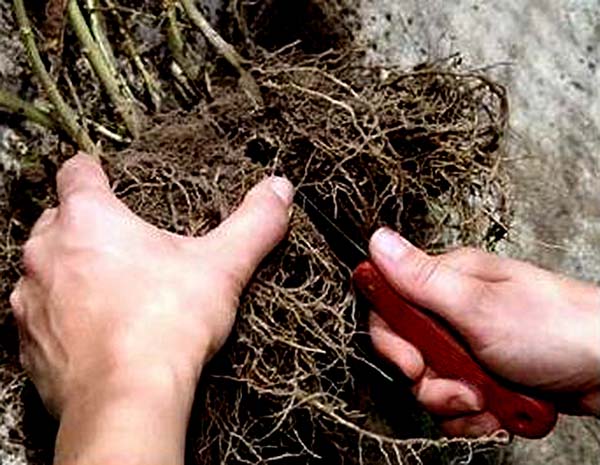
- Place the bush and straighten the roots if necessary.You can plant a bush both with a slight deepening of the root collar (but not more than 2-3 centimeters), and flush with the surface.
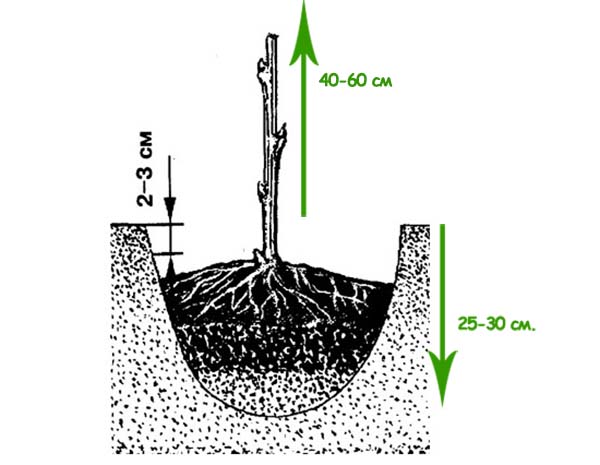
- Next, sprinkle with soil on top and tamp it slightly.
- Water abundantly (5-6 liters). Wait until the soil settles and add soil again.
- Water again abundantly (5-6 liters).
- For better preservation of moisture in the soil, cover with a small layer (5 cm). For this you can use straw, peat or sawdust.
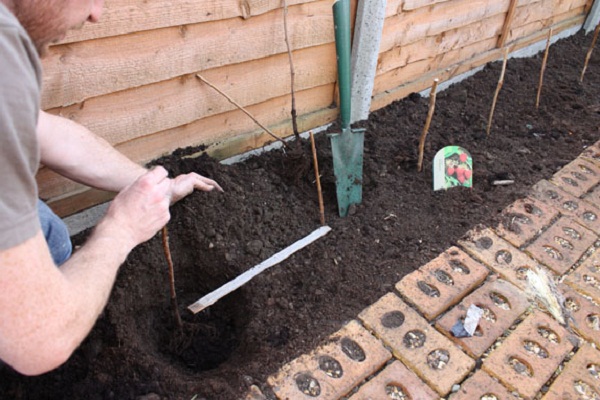
Transplant of root shoots (shoots) or offspring
To begin with, let's clarify what a raspberry root shoot is. These are new shoots that grow from adventitious buds located on the roots of an overgrown (horizontally) plant. As a rule, they grow near the main bush, approximately at a distance of 30-70 cm.
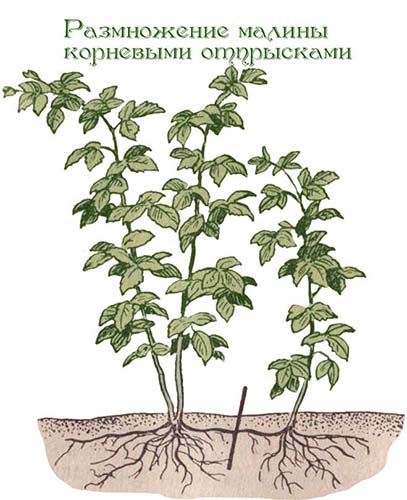
Transplanting raspberries with root shoots is similar to the process of transplanting an adult bush, with the exception of a couple of nuances.
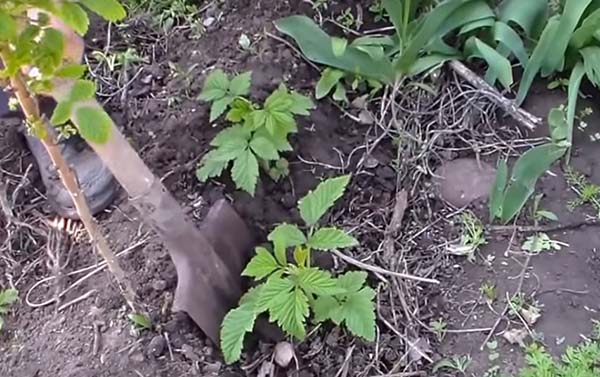
Most often, reproduction in this way is carried out in the spring - with green root suckers. Just at this moment, the processes reach a height of 15-25 centimeters, and they already have a root system. If you postpone the transplant to autumn, then these will be already lignified offspring, whose shoots will grow to a height of 40-50 cm, the trunk will become lignified, which means that their aboveground part should be shortened 2 times (up to 20-25 cm).
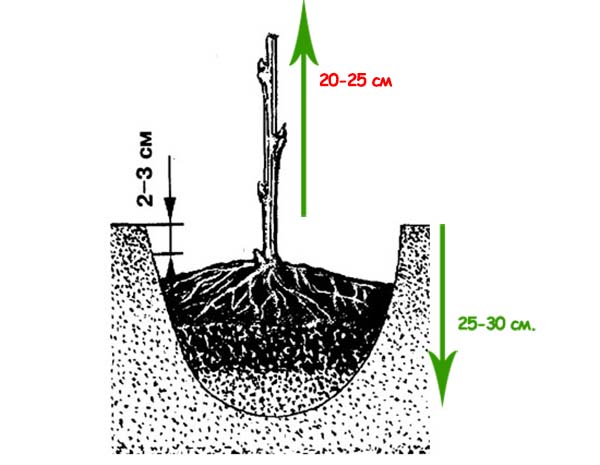
Video: transplanting raspberries with root suckers
Caring for transplanted raspberry bushes
If you are replanting raspberries in the spring, it would be good to cover (shade) the seedling from the sun immediately after planting, for example, by placing pegs and pulling some breathable material on them.
It is also important after transplanting to carefully monitor the soil moisture in the near-stem circle of the shrub and, if necessary, to water.
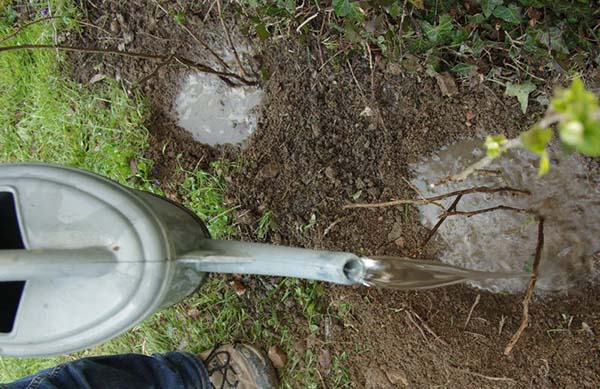
Advice! For better root survival after transplanting, the bushes can be shed a couple of times with Kornevin solution.
The first feeding under the transplanted raspberry bush should be applied no earlier than after 2-4 weeks.
Further care for raspberry bushes is standard: in the fall - preparation and shelter for the winter, in the spring - feeding, pruning and treatment against diseases and pests... And don't forget tie up your bushes.
Worth knowing! You should not wait for the harvest the next year after transplanting. Any plant, the more recently transplanted to a new place, must first restore and build up the root system, and only then direct its forces towards fruiting.
In order for raspberries to work out well, they need to be transplanted from time to time. To do this, you need to prepare "on all fronts": decide on the time of landing, place and method. And then take full care of the transplanted bush.
Video: how to transplant raspberries


